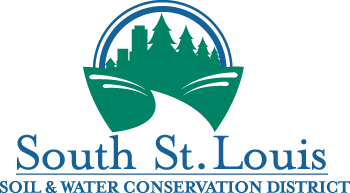A. Wetlands are those areas of land transitional between terrestrial and aquatic systems where the water table is usually at or near the surface or the land is covered by shallow water. Wetlands are specifically identified by using the 1987 Army Corps of Engineers Wetlands Delineation Manual to identify wetland plants, wetland soils, and wetland hydrology. More information (MN Board of Water & Soil Resources)
A. Wrong. There are several different types of wetlands that are not open water marshes. In St. Louis County some of our most common wetlands are shrub and forested wetlands. http://www.dnr.state.mn.us/wetlands/index.html
A. No. See Q1 above. There are several different types of wetlands. Some wetland types may never have standing water, but water is near enough to the surface for a long enough period of time to support wetland plants and create wetland soils.
A. We don’t know. We have access to National Wetland Inventory (NWI) maps and aerial photography that can help agency personnel or individuals get an idea if wetlands are present. But wetlands need to be identified in the field. See Q1 above. From our experience, the NWI maps almost always understate the area of wetland that actually exists. More info (US Fish & Wildlife’s National Wetland Inventory)
A. If you are anticipating a project that could impact wetlands, getting a wetland delineation for the property in advance of applying for permits could save you a lot of problems in the long run. A wetland delineation is a report based on a field investigation completed for an area of land that contains a map of wetland and upland areas plus data sheets that document the presence or absence of wetland indicators. See Q1 above.
A. A wetland delineation is typically prepared by a private consultant that a landowner hires. Available wetland delineators may be found in the phone book. The SWCD and U.S. Army Corps of Engineers maintain lists of contractors available on the internet.
A. Yes. The Minnesota Wetland Conservation Act (WCA) dictates that generally no person shall drain, fill, or otherwise impact any type of wetland, or excavate in the permanent or semi-permanently flooded areas of type 3, 4, or 5 wetlands without first having a wetland replacement plan or other determination approved by the local government unit. The U.S. Army Corps of Engineers also regulates wetlands by implementing the Clean Water Act.
The Minnesota Department of Natural Resources regulates some wetlands that are Public Waters.
The Wetland Conservation Act and federal wetland rules provide a process that allows some development in wetlands, while avoiding and minimizing wetland impacts. Some wetland impacts also require wetland mitigation or replacement wetlands so a no-net loss of wetland quantity and quality is achieved. Almost any wetland impact greater than 400 square feet requires prior approval. The Wetland Conservation Act does have several exemptions that could apply to your project, meaning in limited circumstances wetland impacts could occur without local government approval. However, the U.S. Army Corps of Engineers also regulates wetlands in Minnesota. There are no exemptions under the federal rules that allow impacts greater than 400 sq. ft. without prior notice and approval. In addition, some communities have their own wetland management plans that regulate wetlands above the standards of the WCA.
A. Early in your project planning submit a Minnesota Local/State/Federal Application Forms for Water/Wetland Projects. Instructions are included with the application. The application is submitted to the Local Government Unit (LGU) that has jurisdiction over the wetland project, the DNR, and the Army Corps of Engineers. The LGU is the county or city where the project is located. Townships with their own zoning authority are not WCA LGUs. Contact the SWCD if you are not sure where to send the application.
A. Yes. All WCA determinations and approvals are made locally. All applications are sent to the Local Government Unit, DNR and Army Corps of Engineers. Contact the SWCD for help determining your WCA LGU.
A. Not completely. A project may be eligible for an exemption under the WCA; however exemptions can be complicated and may only apply to certain types of wetlands in certain locations. Plus, prior approval from the U.S. Army Corps of Engineers is still needed even for WCA exemptions.
A. No. A culvert permit does not authorize the filling of wetlands. Also, a building permit from a township zoning office does not authorize wetland impacts. Authorization for wetland impacts comes only from the WCA LGU (St. Louis County or city where the project is located) and the U.S. Army Corps of Engineers. You must specifically apply to impact wetlands.
A. No. See Q12. It can be confusing, but there are separate permit processes.
A. Maybe. Excavation in type 1, 2, 6, 7, 8 wetlands is not regulated by WCA, as long as the excavation is not greater than 2 meters (6.6 feet), no draining of the wetland occurs, and no spoils or excavated material is placed in a wetland. However, in most instances, written authorization from the U.S. Army Corps of Engineers is required for ponds constructed in wetlands. See Q9 above for an application. More info
A. Make sure that you inspect the property during the wettest time of the year. Ensure that the property is suitable to whatever your potential plans may be. One could ask the seller to produce an approved wetland delineation prior to closing on the property. National Wetland Inventory maps and aerial photos could be reviewed. If in doubt, ask the LGU, SWCD, U.S. Army Corps of Engineers, or a qualified consultant. See Q1-6 above.
A. Contact us:
South St. Louis SWCD
4215 Enterprise Circle
Duluth, MN 55811
218.723.4867

